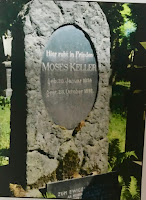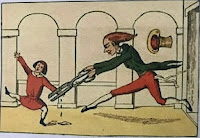Is there a Doctor in the House?
At Touro Synagogue
August 25, 2018
At Touro Synagogue in Newport on Shabbat we heard from three doctors: a spiritual doctor, Rabbi Marc Mandel, a medical doctor, Morton Glasser, and a social doctor, Irene Glasser (Irene is a doctor of anthropology, so perhaps I should say a societal doctor.)
After greeting one and all (and they came from as far as London), Rabbi Mandel said,
“The Torah teaches us to take care of our health. It’s a mitzvah to take care of your health, mentioned several times in the book of Deuteronomy, [4:15] take good care of yourselves וְנִשְׁמַרְתֶּ֥ם מְאֹ֖ד לְנַפְשֹׁתֵיכֶ֑ם.
“In this week‘s Torah reading we are told [Deuteronomy 24:8]
הִשָּׁמֶר בְּנֶגַע-הַצָּרַעַת, be careful for certain diseases. Smoking certainly causes diseases in the human body.
“I saw an interesting video online from a Dr. Dave Montgomery, a cardiologist at the Piedmont Heart Institute.[ a video is at https://youtu.be/JAKeZXigQtQ] He said most people associate cigarette smoking with lung problems, but he said that it is really your heart and blood vessels that get damaged the most from smoking.
“Just this week there was a major medical discovery: the healthier your heart, the healthier your brain, meaning the more measures of cardiovascular health older people had, the less likely they are to develop dementia. But I’m not a doctor and will let our kiddish speakers talk about these issues.
“…It hurts me when I see people who are meticulous about attending the weekday minyan take breaks during davening for smoking: Don’t they realize that taking care of your health is a mitzvah just like davening? Don’t they realize that the torah frowns on this type of behavior? Why is that ignored?
“As we approach the new year, Rosh Hashanah, let’s do what we can to help all people live healthier and holier lives. Shabbat Shalom!”
At the kiddish, which they sponsored, Drs. Morty and Irene’s brief talks were related but very different.
Dr. Morty started with good news. Smoking rates in the United States have gone down considerably. He attributed it to the high price of cigarettes, which is caused by high taxes, and said we should think what the implications of this are for other health issues. He stayed away from the reasons why people smoke.
He pointed out that American Indians (and Eskimos and other indigenous peoples) have the highest rate of smoking, in part, at least, because tobacco on reservations is untaxed.
Dr. Irene began by saying how tobacco was traditionally used by native Americans. Tobacco was sacred and reserved for shamans who used it on special occasions. This is what the Europeans saw when they arrived. They deduced that it was a healing plant, and that is how it was initially presented back home.
I asked Newporter Mrs. Namel Chadash if she had the inside story.
“Now listen, Mr. Aaron! Ven you vant to know vat really happened, don’t go to Vikipedia, komm zu mir! Ven those pilgrims or puritans (I never could figure which was which) landed at that rock in Old Virginny (Have I got that right?), they found smokin’ locals who were feeling pretty good.
“John Rolfe, (who married Pocahontas, no less) said to his friend, Captain John Smith, ‘Methinks we could sell a lot of this back home. People are always looking for something to help them feel happy.’
“John Smith, a sly one vas he, replied, ‘John, methinks that is not the best vay to sell tobacco. Let’s call it medicine. People will pay anything for their health, and ve can avoid the sin taxes.’ The rest, as they say, is history!”
Dr. Irene focused on the homeless population in Rhode Island. Many of them smoke. Rhode Island’s adoption of universal healthcare has been very successful in increasing the availability of healthcare to all, but, reaching out to homeless people to give them information about smoking cessation is difficult. Smoking is one of many health issues they face. Living much of their time on the street is not conducive to counseling.
One approach is to make counseling available in soup kitchens. This was tried as a pilot program. Many of the homeless were interested in learning how to stop smoking, which indicates that anti-smoking efforts have reached them, and were grateful for any information. Unfortunately, the pilot program ran out of money and was not refunded.
Another approach is to train employees in shelters or day programs in smoking cessation. This was done in Rhode Island, but getting those employees into counseling did not work out; they still had to perform their regular duties.
Irene was asked a lot of questions and comments were made by the audience. People speculated about why smoking is high in this population.
One person said that tobacco companies are currently trying to decrease the price of tobacco in military facilities. I could not document this. In fact, it appears the military is very interested in the health of sailors and soldiers, and takes this into account when deciding how to price tobacco products.
The subject of treating narcotic addiction also came up. A parallel group to the homeless is the prison population. Irene explained that in Rhode Island, we only have a state prison system, not a county system. This simplifies trying something different. In prison one cannot use illegal drugs, but that does not mean the addiction disappears. There are three medicines that might help, and Rhode Island enacted regulations to make these available to prisoners.
After the talk, I got more insight from Dr. Morty. He said that even among the homeless, smoking has decreased. He added that there is a big difference between smoking two cigarettes a day vs. two packs a day. The percentage of smokers doesn’t tell the full story.
 That reminded me of a book, How to Lie with Statistics, by Darrell Huff that my college roommate, Arthur Forman, brought to my attention 35 years ago when he was a Neurology Senior Registrar at the Radcliffe infirmary, Oxford, England.
That reminded me of a book, How to Lie with Statistics, by Darrell Huff that my college roommate, Arthur Forman, brought to my attention 35 years ago when he was a Neurology Senior Registrar at the Radcliffe infirmary, Oxford, England.
In the 1960s and 70s, How to Lie with Statistics was often assigned reading in college and is one of the best selling books about statistics, having sold over 1.5 million copies, and that is just in English. To get off to a good start, Mr. Huff begins with a quote he attributed to Disraeli, “There are three kinds of lies; lies, damned lies, and statistics.” You can read the whole book at http://www.horace.org/blog/wp-content/uploads/2012/05/How-to-Lie-With-Statistics-1954-Huff.pdf
Shabbat Shalom from Jewish Newport!
















